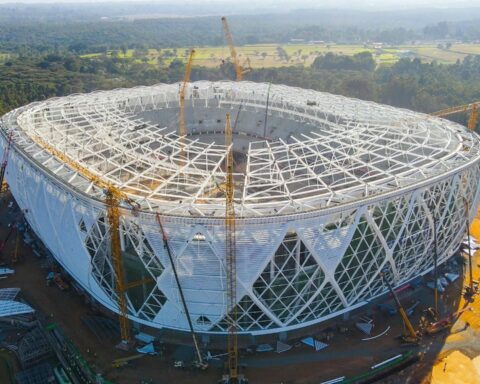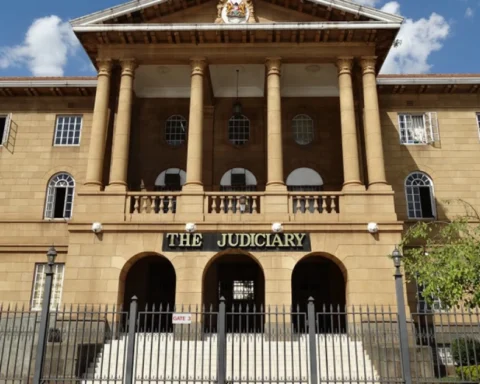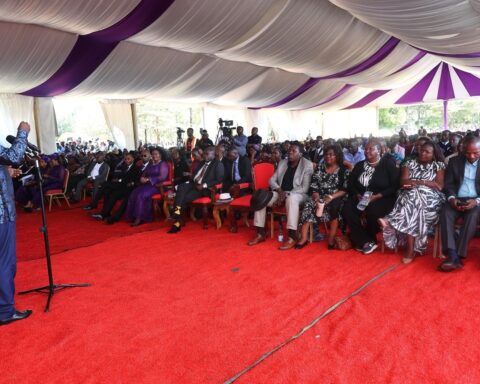After the brutal 1969 assassination of Tom Mboya in the midday sun, at Nairobi’s CBD, Jomo Kenyatta’s grip on power was browbeaten. There were massive reprisals from Kenyans, especially the Luo nation, where the former cabinet minister was a political chief. Three years before the killing of Mboya, Jaramogi bitterly fell out with KANU and its leadership at the Limuru Convention. The aftermath? Decamping KANU to form the Kenya People’s Union (KPU), in 1966.
To rally the ethnic Kikuyu against the Luo (accused of trying to take over government with help of Communists), Jomo sanctioned the now-infamous oath, at his farm in Gatundu. Young and old Kikuyu men and women were rallied behind the uthamaki dogma. An oath to protect the presidency from outsiders, and keep it within Mt Kenya. Even if it means blood and death.
More than 55 years later, the Kikuyu-Luo connection is still plagued by mistrust, deceit, and bitter feelings of the past. From both sides. However, temporary ceasefires after 2002, 2008, and the current 2018 Handshake babble how many strides Kenya can make, if the Luo-Kikuyu relationship would be a more perfect union.
President Mwai Kibaki’s best years in office are those he closely worked with Raila Odinga. From 2002 to 2005, and later in the Coalition Government after 2008. The fruits of Kibaki’s confederation, with Odinga as Minister for Roads and Public Works, then later as Prime Minister, are visible to date. From the Kibaki era infrastructure and expansion of roads in Nairobi, ambitious urban housing plans (sabotaged by people in government), to the new Constitution (2010). Kenya’s most progressive years are those with Raila Odinga close to the levers of Power.
Lessons from previous engagement with Kibaki point to Odinga’s intentions when he partnered with President Uhuru on his final term. The country was not just in a political reversal in 2017, it was in economic turmoil, after five years of public pilferage from YK 92 remnants. Overborrowing and over stealing are the two superlative achievements of Jubilee, between 2013 and 2017. The dynamic duo remarkably failed their first-term promises, including free laptops, the six mega-stadia, electric commuter rail, paid internships, and the 1 million jobs per annum. Instead, the first term was a looting spree.
The March 2018 handshake came with a new blueprint. It also handed President Uhuru the much-needed shield, from a rabid Deputy. It was not an accord between two individuals, but a covenant for the People through the two leaders (Uhuru and Raila) who took an oath in broad daylight.
Just like after 2002, and 2008, in 2021, Kenya inscribed three of its most progressive years (post-2018) under Jubilee’s 8-year reign, from 2013. The Thika Superhighway came to life when Odinga was in government. Similarly, the 2010 Constitution, as Prime Minister.
Similarly, today, the ongoing clamor for the First Amendment of the 2010 constitution, through the BBI is championed by Raila Odinga. President Uhuru’s ruthless fight against graft gives him space to finish the various mega infrastructure his administration is currently undertaking in various parts of the republic. Including the Nairobi Expressway, the Kisumu Port, and the rehabilitation of the country’s old railway lines.
With the BBI, once again, Kenyans get to directly benefit from an initiative led by Raila Odinga. A tax holiday for the youth, additional funds to the counties, and women representation. President Uhuru Kenyatta will not be out of line, to break Jomo’s infamous oaths, by, for the first time, allowing power to go beyond Mt Kenya. Especially to an ”outsider” who gave him a political lifeline on his last term.












In politics there’s nothing like permanent enemies, what determine politics is interest